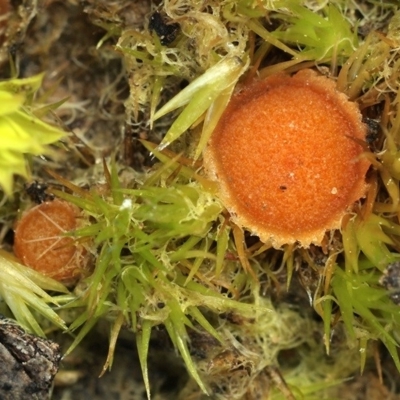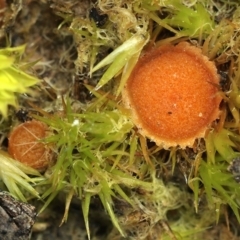Lamprospora australis
The fruitbody is a stemless, reddish-orange to yellowish-orange disk up to 3 millimetres in diameter. The margin is raised and is tufted or fuzzy.
The fruitbodies appear on the ground amongst mosses and the species is reported to be a moss parasite.
The species was first described by McLennan & Cookson (see below) as Lamprospora areolata var. australis, based on specimens collected in Victoria (at Ringwood and near Castlemaine) in 1921. Rifai (see below) argued that this fungus was quite distinct from Lamprospora areolata and warranted recognition as a separate species. Both publications contain excellent drawings of microfeatures.
Look-alikes
Other species of Lamprospora are macroscopically similar and identification to species requires a look at the spores. There are several genera of small, orangeish disk fungi, mostly without the raised, tufted/fuzzy margin. You find that type of margin also in some species of Octospora.
References
McLennan, E. & Cookson, I. (1923). Additions to the Australian ascomycetes. I. - Proceedings of the Royal Society of Victoria, New Series, 35, 153-158 & plates IX-X.
See this sighting https://canberra.naturemapr.org/Sightings/4300532 for the McLennan/Cookson drawings.
Rifai, M.A. (1968). The Australasian Pezizales in the herbarium of the Royal Botanic Gardens Kew, Noord-Hollandsche U.M, Amsterdam.
Lamprospora australis is listed in the following regions:
Canberra & Southern Tablelands
Species information
- Lamprospora australis Scientific name
- Common name
- Not Sensitive
- Local native
- Non-invasive or negligible
- Machine learning






